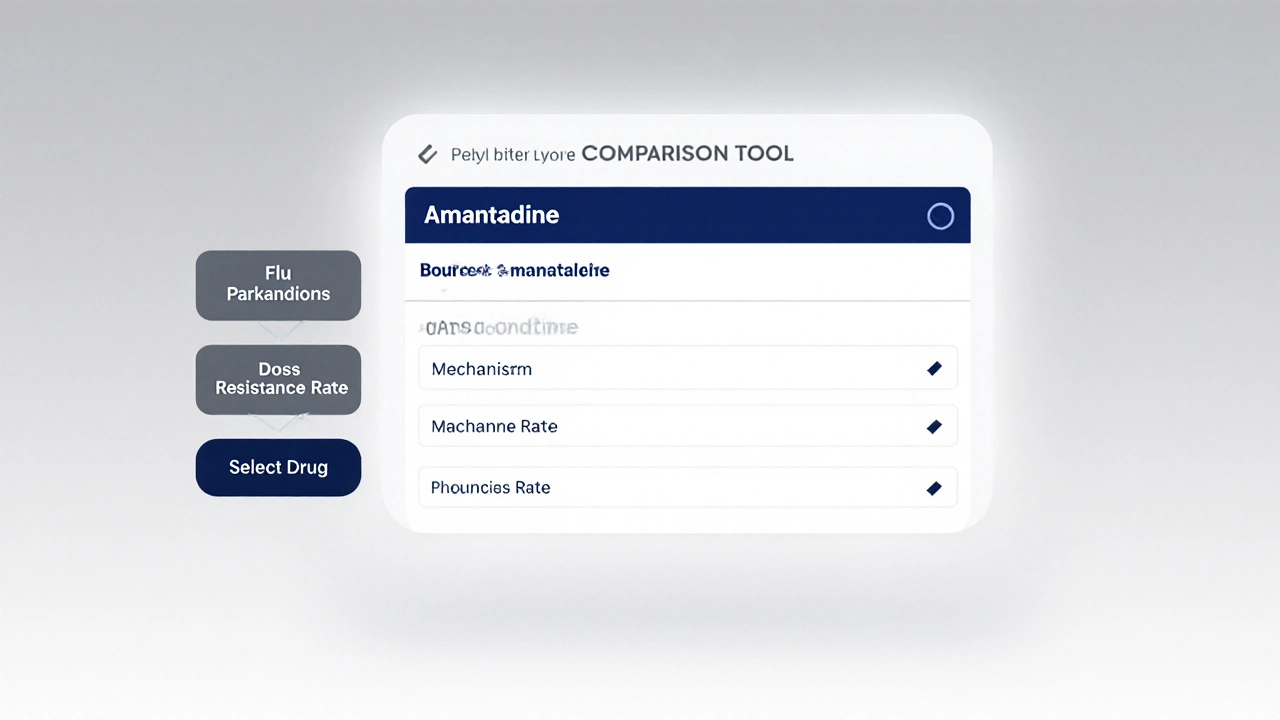Amantadine: Uses, Side Effects, and How It Compares to Other Parkinson's Medications
When you hear Amantadine, a medication originally developed as an antiviral that later became a key tool for Parkinson’s and movement disorders. Also known as Symmetrel, it works by boosting dopamine in the brain and blocking excess glutamate, which helps reduce stiffness, tremors, and slowness. Unlike most Parkinson’s drugs that just replace dopamine, Amantadine helps your brain use what’s left more efficiently—and it’s one of the few that can also ease drug-induced dyskinesia, those unwanted jerky movements from long-term levodopa use.
It’s often grouped with other anticholinergic alternatives, like Kemadrin and Trihexyphenidyl, which target muscle control issues by balancing brain chemicals, but Amantadine doesn’t work the same way. It’s not an anticholinergic—it’s a dopamine modulator. That means it’s less likely to cause confusion or dry mouth, common problems with older drugs. It’s also used differently than dopamine enhancers, like Sinemet or Mirapex, which directly replace or stimulate dopamine receptors. While those drugs tackle the root cause of Parkinson’s, Amantadine helps smooth out the side effects of treatment. That’s why many people take it alongside other meds—not instead of them.
It’s also one of the few drugs still used for flu prevention, though that’s less common now. For Parkinson’s patients, it’s often tried early because it’s gentle on the body and doesn’t need frequent dose changes. But it’s not magic. Some people get swelling in their legs, trouble sleeping, or a purple mottled skin rash called livedo reticularis. And if you’re over 65 or have kidney issues, your doctor will likely lower the dose. It’s not a first-line drug for everyone, but for those struggling with dyskinesia or mild symptoms, it can be a quiet game-changer.
Looking at the posts here, you’ll find direct comparisons—like how Amantadine stacks up against Kemadrin and other Parkinson’s drugs in terms of side effects, cost, and long-term use. You’ll also see how it fits into broader treatment plans, what real users report, and when it’s better to switch to something else. No fluff. Just clear, practical info on when Amantadine helps, when it doesn’t, and how to use it safely with other meds.
A detailed side‑by‑side look at amantadine, its uses, and how it stacks up against rimantadine, oseltamivir, zanamivir, and memantine for flu and neurological conditions.

